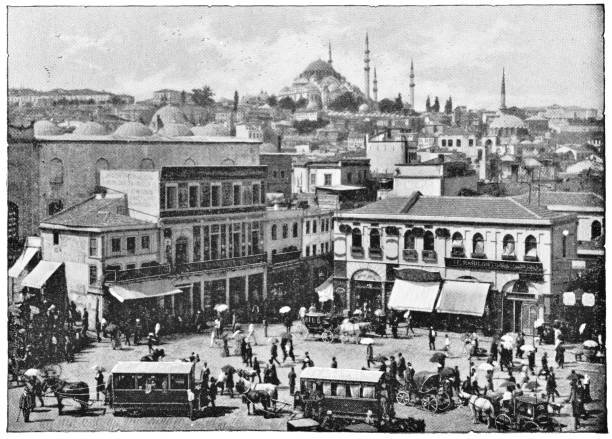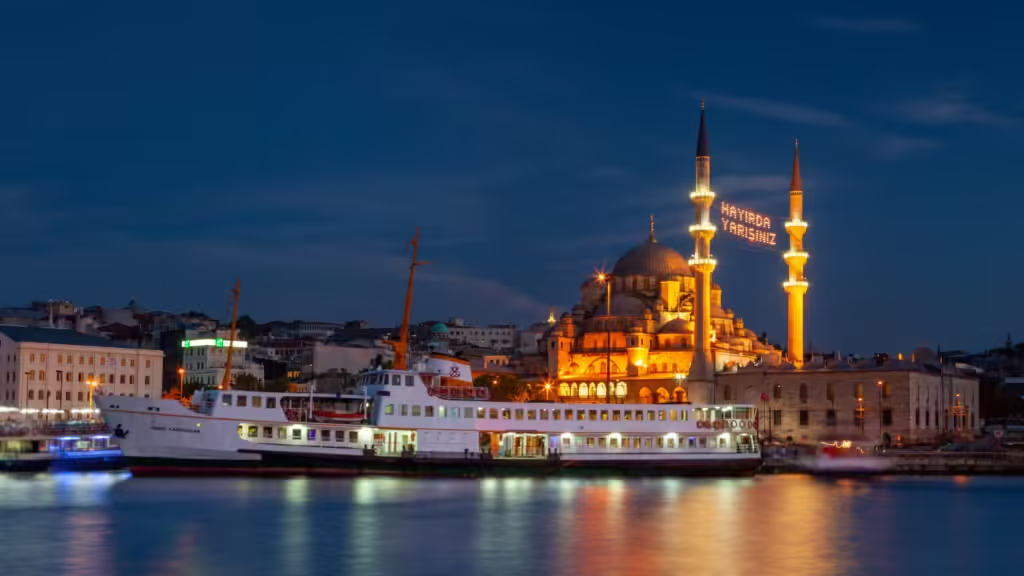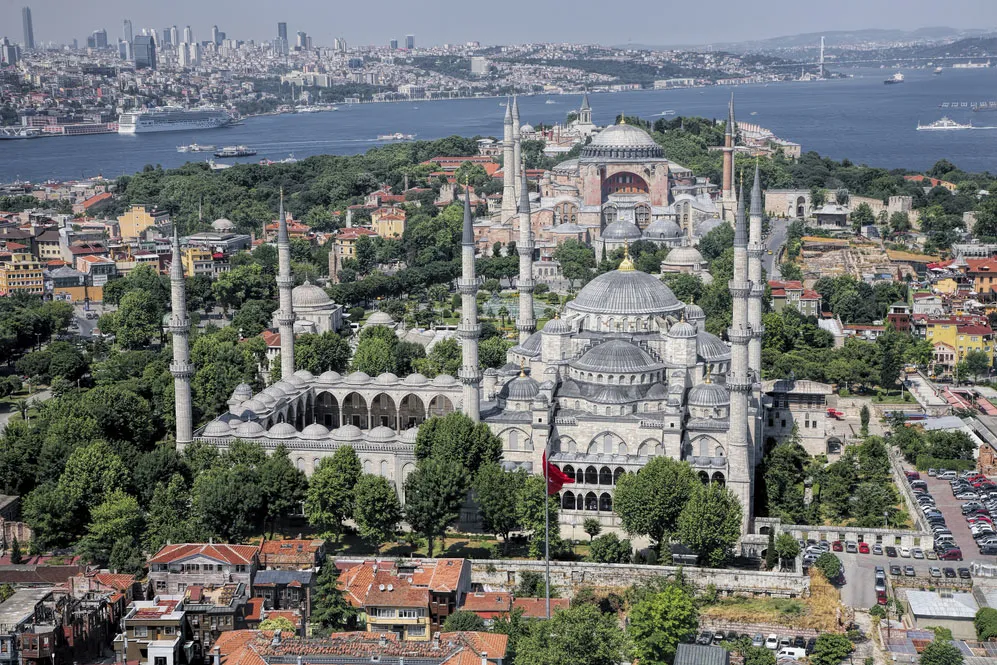Istanbul Then and Now
Istanbul Then
Istanbul, Turkey’s largest city and principal seaport, has a rich and complex history reflected in its changing names.
Initially founded as Byzantium around 657 BCE by Megarian colonists, the city was named after their legendary founder, Byzas, who was said to be the son of Poseidon and the nymph Ceroëssa.
Over time, the city became known as Constantinople, named after Roman Emperor Constantine the Great, who refounded it in 324 CE.
This name remained dominant in the West until the 1930s when Turkish authorities began promoting the use of “Istanbul” internationally.
The name “Istanbul” is believed to derive from the Medieval Greek phrase εἰς τὴν Πόλιν (pronounced tin Polin), meaning “to the city,” reflecting its status as the only major urban center in the region. This is how locals referred to Constantinople.
Another theory suggests that the name evolved directly from “Constantinople,” with parts of the original name being dropped over time.

By the 17th century, the name Istanbul was widely used, and it became official by the late 18th century.
The city’s name in modern Turkish, İstanbul, is spelled with a dotted İ, which distinguishes it from the dotless I used in other words.
In Turkish pronunciation, the stress falls on the second syllable, whereas in English, it is often placed on the first or last syllable. People from Istanbul are known as İstanbullular in Turkish or Istanbulites in English.
Related Article: Riyadh Then and Now
Istanbul History
The history of Byzantium and later Constantinople (Istanbul) reflects a rich and tumultuous past, shaped by multiple empires, rulers, and cultural transformations.
Founded as a Greek colony by settlers from Miletus and Megara around the 8th century BCE, Byzantium was strategically located on the Bosporus, providing control over trade routes between Europe and Asia.
It was briefly controlled by the Persian Empire, with the city changing hands several times throughout the centuries as various powers vied for dominance.
The city’s significance increased when it became part of the Athenian Empire after the defeat of Persia, later switching allegiances to Sparta during the Peloponnesian War.
Related Article: Abu Dhabi Then and Now
Byzantium’s history continued with significant moments, including its resistance to Macedonian rule under Alexander the Great, and periods of independence followed by submission to Roman and later Byzantine authority.
The transformation of Byzantium into Constantinople marked a pivotal moment in history when Emperor Constantine I chose it as the new capital of the Roman Empire in 330 CE, known as “New Rome.”
Constantine’s vision for the city was grand, as it became the center of the Christian world, a beacon of imperial power, and a cultural hub that blended Greek, Roman, and Christian influences.
The city would remain a central point for the Eastern Orthodox Church, and its walls, palaces, and churches, such as the famed Hagia Sophia, stood as monuments to its importance.
Related Article: Doha Then and Now

However, the city’s fortunes waxed and waned over the centuries. Constantinople faced multiple sieges and invasions, including by the Arabs, Bulgars, and Russians, but it remained a stronghold for much of its history.
Its most devastating blow came during the Fourth Crusade in 1204, when the city was sacked by Crusaders, and the Latin Empire was established.
This period of Latin rule (1204-1261) marked a time of plunder and decline for Constantinople, though it was restored by the Byzantines in 1261.
The final blow came in 1453 when the Ottoman Sultan Mehmed II successfully captured the city after a long siege, marking the end of the Byzantine Empire.
Related Article: Ahmedabad Then and Now
Constantinople, now called Istanbul, became the new capital of the Ottoman Empire, and many of its iconic churches, including Hagia Sophia, were converted into mosques.
Under Ottoman rule, Istanbul flourished once again, becoming a major cultural, economic, and political center, and undergoing significant architectural development, particularly during the reign of Süleyman the Magnificent.
The 19th century saw the gradual decline of the Ottoman Empire and efforts at modernization, including reforms aimed at Westernization under Sultan Mahmud II and his successors.
Related Article: Hyderabad Then and Now
The influence of European powers, the construction of new infrastructure, and the growing Western presence in the city marked a new phase in Istanbul’s history, leading into the 20th century as the city continued to evolve under modern Turkish rule.
Today, Istanbul stands as a vibrant city that reflects its rich history, blending ancient traditions with modern developments.
It remains a bridge between East and West, both geographically and culturally.
Related Article: Bengaluru Then and Now
Istanbul Now

Istanbul, the largest city in Turkey, is a vibrant metropolis that straddles the Bosporus Strait, a natural boundary separating Europe and Asia.
This unique geographical positioning has given the city both a rich cultural diversity and strategic importance throughout history.
With a population exceeding 15 million people, Istanbul is not only the most populous city in Turkey but also the largest city in Europe.
Related Article: Chennai Then and Now
It is a global hub for commerce, culture, and history, making it a center of influence in both the modern and ancient world.
As the economic, cultural, and historic capital of Turkey, Istanbul plays a central role in the country’s development.
The city houses the headquarters of many Turkish companies and contributes significantly to the nation’s GDP.
Related Article: Fukuoka Then and Now
In fact, Istanbul accounts for over 30% of Turkey’s economy, highlighting its importance as an economic powerhouse.
The city’s historical significance is also undeniable. Its historic center, which includes landmarks such as the Hagia Sophia and Topkapi Palace, is designated as a UNESCO World Heritage Site, further solidifying its cultural and historical value.
Istanbul’s strategic location has made it a crossroads of civilizations for over 2,500 years.
Related Article: Nagoya Then and Now
The city’s geography, positioned between Europe and Asia and flanked by the Sea of Marmara, the Bosporus, and the Golden Horn, has provided both natural defense and a vital passageway for trade. Historically, this made Istanbul a highly coveted city, with numerous empires vying for control.
Its prominence as a trade hub is evident in its diverse cultural influences, which range from Byzantine and Ottoman legacies to modern-day Western and Eastern elements.
The city’s landscape is equally fascinating. Though many associate Istanbul with seven hills, it is, in fact, built on more than 50 hills, providing stunning views across the city and its waterways.
Related Article: Osaka Then and Now
Istanbul’s highest point, Aydos Hill, stands at 537 meters (1,762 feet), offering panoramic vistas of the sprawling urban landscape.
The city’s natural beauty is complemented by picturesque islands such as Büyükada, Heybeliada, and Burgazada, which are part of the city and add to its charm.
Istanbul’s rapid growth and urbanization are reflected in the expansion of its boundaries. Large areas of the city, like Caddebostan, have been built on reclaimed land, pushing the total area of the city to over 5,343 square kilometers (2,063 square miles).
Related Article: Busan Then and Now
This expansion mirrors Istanbul’s dynamic nature, constantly evolving and adapting while maintaining its historical significance.
With more than 20 million foreign visitors in 2023 alone, Istanbul has surpassed cities like London and Dubai to become the most visited city in the world, drawing people from all corners of the globe to experience its unique blend of history, culture, and modernity.
Related Article: Taipei Then and Now
FAQs
Istanbul is famous for its rich history, unique geography, and cultural diversity. It has been the capital of three major empires—the Byzantine, Roman, and Ottoman—making it a significant center of art, architecture, and religion.
Iconic landmarks like the Hagia Sophia, Topkapi Palace, and the Blue Mosque attract millions of visitors each year.
Istanbul is not the capital of Turkey; Ankara is the capital. However, Istanbul is the country’s largest and most populous city, often regarded as its economic, cultural, and historical hub.
Istanbul holds great significance in Islam, particularly due to its role as the capital of the Ottoman Empire, which was one of the largest Islamic empires.
The city is home to important mosques like the Blue Mosque and Hagia Sophia (which was originally a church before being converted into a mosque), making it a symbol of Islamic heritage and culture.
Istanbul is a transcontinental city, with parts of it located in both Europe and Asia. The Bosporus Strait divides the city, making it a unique bridge between two continents.






























